
Anthozoa is a class of marine invertebrates which includes the sea anemones, stony corals and soft corals. Adult anthozoans are almost all attached to the seabed, while their larvae can disperse as part of the plankton. The basic unit of the adult is the polyp; this consists of a cylindrical column topped by a disc with a central mouth surrounded by tentacles. Sea anemones are mostly solitary, but the majority of corals are colonial, being formed by the budding of new polyps from an original, founding individual. Colonies are strengthened by calcium carbonate and other materials and take various massive, plate-like, bushy or leafy forms.

Antipatharians, also known as black corals or thorn corals, are an order of soft deep-water corals. These corals can be recognized by their jet-black or dark brown chitin skeletons, surrounded by the polyps. Antipatharians are a cosmopolitan order, existing at nearly every location and depth, with the sole exception of brackish waters. However, they are most frequently found on continental slopes under 50 m (164 ft) deep. A black coral reproduces both sexually and asexually throughout its lifetime. Many black corals provide housing, shelter, food, and protection for other animals.

Hexacorallia is a class of Anthozoa comprising approximately 4,300 species of aquatic organisms formed of polyps, generally with 6-fold symmetry. It includes all of the stony corals, most of which are colonial and reef-forming, as well as all sea anemones, and zoanthids, arranged within five extant orders. The hexacorallia are distinguished from another class of Anthozoa, Octocorallia, in having six or fewer axes of symmetry in their body structure; the tentacles are simple and unbranched and normally number more than eight. These organisms are formed of individual soft polyps which in some species live in colonies and can secrete a calcite skeleton. As with all Cnidarians, these organisms have a complex life cycle including a motile planktonic phase and a later characteristic sessile phase. Hexacorallia also include the significant extinct order of rugose corals.

Octocorallia is a class of Anthozoa comprising around 3,000 species of water-based organisms formed of colonial polyps with 8-fold symmetry. It includes the blue coral, soft corals, sea pens, and gorgonians within three orders: Alcyonacea, Helioporacea, and Pennatulacea. These organisms have an internal skeleton secreted by mesoglea and polyps with eight tentacles and eight mesentaries. As with all Cnidarians these organisms have a complex life cycle including a motile phase when they are considered plankton and later characteristic sessile phase.
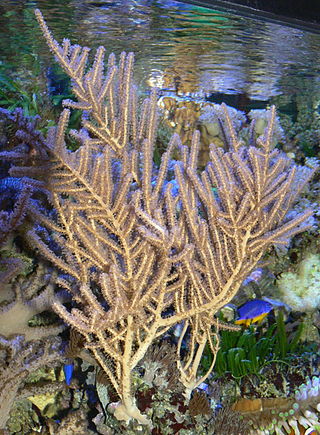
Gorgoniidae is a family of soft corals, a member of the subclass Octocorallia in the phylum Cnidaria. Nearly all the genera and species are native to the east and west coasts of America.

Antipathidae is a family of corals in the order Antipatharia, commonly known as black corals. They are generally considered a deep-water taxon; however, some of the most diverse communities are known from tropical shallow waters.
Allopathes is a genus of corals in the family Antipathidae. It is characterized by several long stems protruding from a short, thick base with spines arranged vertically around the stem. Its polyps are arranged in a single row that run the length of the coral. This genus was initially a subgenus of Cirrhipathes and Stichopathes, although it also displayed similarities to Antipathes verticillata. However, the presence of branched growth forms excludes it from Stichopathes or Cirrhipathes and the unique morphology of its spines meant that it could not be included in Allopathes. Because they seemed to have a combination of characteristics of different genera, the two species in question, Allopathes desbonni and Allopathes robillardi were given their own genus.
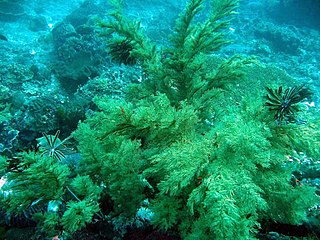
Antipathes is a genus of coral in the order Antipatharia, composed of black coral. Distinct features vary greatly within this genus: it contains symmetrically aligned as well as irregularly shaped corals, a range of different colors, and colonies that can be either sparsely branched or closely packed. polyps for these corals have six tentacles that are each lined with stinging cells. Unlike their reef-building cousins, these coral lack photosynthesizing algae and are not restricted to the lighter surface regions. They prefer to live in deeper waters near currents so they can catch and eat passing zooplankton.
Aphanipathidae is a family of corals in the order Antipatharia. Species in this family have short, blunt polyp tentacles that tend to be uniform. Spines range from conical to cylindrical and usually have conical tubercles. Unlike Antipathidae, species in this family are not notched or branched at the end.

Antipathes dichotoma is a species of colonial coral in the order Antipatharia, the black corals, so named because their calcareous skeletons are black. It was first described by the German zoologist and botanist Peter Simon Pallas in 1766, from a single specimen he received from near Marseilles in the Mediterranean Sea.
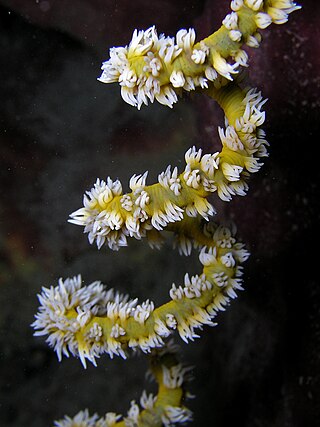
Cirrhipathes is a genus of black coral from the family Antipathidae. Coral species in this genus are commonly known as whip or wire corals because they often exhibit a twisted or coiled morphology. In addition to their colorful appearance, with colors ranging from yellow to red passing through blue and green, these species possess a dark skeleton that is characteristic to every black coral.
Callogorgia elegans is a species of soft corals in the family Primnoidae. It is found in the north-western Pacific Ocean. Like other coral species, C. elegans is bottom-dwelling and sessile, or immobile.
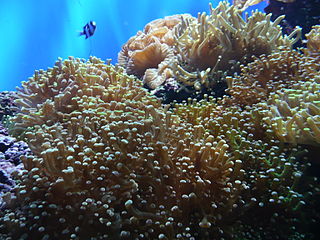
Euphylliidae are known as a family of polyped stony corals under the order Scleractinia.
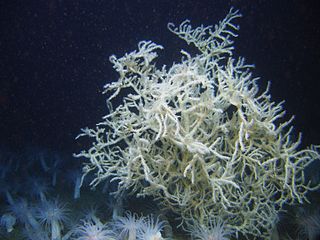
Leiopathes glaberrima is a species of black coral of the order Antipatharia found in the northern Atlantic Ocean and the Mediterranean Seas deep water habitats. A very slow-growing species, it is among the oldest living animals on the planet.
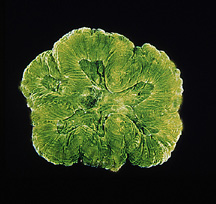
Isophyllia is a genus of stony coral in the subfamily Mussinae of the family Mussidae.

Antipathella fiordensis is a species of colonial coral in the order Antipatharia, the black corals, so named because their calcareous skeletons are black. It was first described as Antipathes fiordensis by the New Zealand zoologist Ken R. Grange in 1990, from material collected in the steep-sided fiords of Fiordland in the southeastern South Island, New Zealand. A 2001 revision of the Antipatheria put this species in the newly-created genus Antipathella.
Bathypathes is a genus of black coral in the family Schizopathidae.
Pseudonephthea is a genus of corals containing the only species Pseudonephthea liltvedi, or the stalked cauliflower soft coral. It is a cnidarian that is endemic to the coast of South Africa.
Alternipathes bipinnata is a species of coral belonging to the family Schizopathidae. It has been found off the Pacific coast of Mexico.












